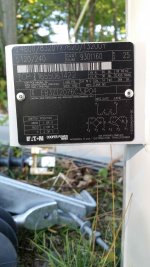MD Automation
Senior Member
- Location
- Maryland
- Occupation
- Engineer
Based on what I know from the pole outside my house...
If you look at this nameplate from my transformer, you can see (like Don says above) one side (top right) of the Primary winding is marked as GND and bonded to the can.
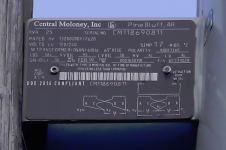
The Secondary neutral is also typically bonded, but outside and not internally. Like this...
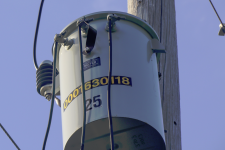
In the pic below - (disregard the blown cutout) - you can see what I call the MGN (multi-grounded neutral) wire. It's the one underneath the transformer. This runs along the whole path, mostly below the 7680V primary, but also sometimes on the same level depending on if there is a crossbar on the pole.
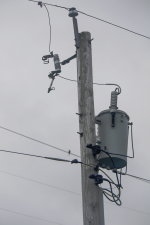
That MGN is the neutral for both primary and secondary. And if my transformer served any other houses up or down my road, it would have the 2 hot secondary legs mounted above and below that MGN heading out right and left - and it would look exactly like any of the pics you posted. In fact they even have the standoffs for the top and bottom secondary wires in place, in my case they are simply used to secure the connections to my service laterals.
The bulk of all the return current from the primary is going back on that MGN. Sure some part of it goes down my well casing, or back thru the cable TV shield, or the ground rod(s) sunk into the soil, or any of the other myriad connections up and down the road. But I would think most is taken up by that MGN. It's certainly the lowest "resistor" in all the hundreds of paralleled "resistors" that try to return the primary current back to the source.
And for pad mounted transformers you asked about, that MGN is brought down to the HV connection along with the primary. It's the "N" in a CN (Concentric Neutral) cable. It's unwrapped and separated at the loadbreak connector.
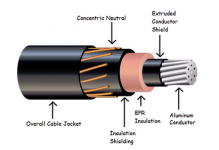
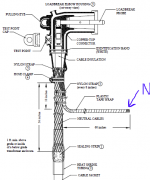
If you look at this nameplate from my transformer, you can see (like Don says above) one side (top right) of the Primary winding is marked as GND and bonded to the can.

The Secondary neutral is also typically bonded, but outside and not internally. Like this...

In the pic below - (disregard the blown cutout) - you can see what I call the MGN (multi-grounded neutral) wire. It's the one underneath the transformer. This runs along the whole path, mostly below the 7680V primary, but also sometimes on the same level depending on if there is a crossbar on the pole.

That MGN is the neutral for both primary and secondary. And if my transformer served any other houses up or down my road, it would have the 2 hot secondary legs mounted above and below that MGN heading out right and left - and it would look exactly like any of the pics you posted. In fact they even have the standoffs for the top and bottom secondary wires in place, in my case they are simply used to secure the connections to my service laterals.
The bulk of all the return current from the primary is going back on that MGN. Sure some part of it goes down my well casing, or back thru the cable TV shield, or the ground rod(s) sunk into the soil, or any of the other myriad connections up and down the road. But I would think most is taken up by that MGN. It's certainly the lowest "resistor" in all the hundreds of paralleled "resistors" that try to return the primary current back to the source.
And for pad mounted transformers you asked about, that MGN is brought down to the HV connection along with the primary. It's the "N" in a CN (Concentric Neutral) cable. It's unwrapped and separated at the loadbreak connector.



